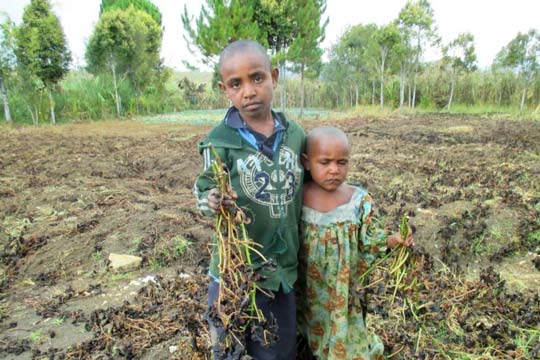
PORT MORESBY (Radio New Zealand International/ PNG Post-Courier/ Matangi Tonga/ The Fiji Times/ Pacific Media Watch): The United Nations called on Pacific governments this week to prepare for what could be the worst El Niño system to impact on the region.
The UN resident coordinator in Fiji, Osnat Lubrani, said it is expected to rival the 1997 El Niño, the most severe on record.
Lubrani said drought problems currently being experienced around parts of the region are just the beginning.
She said governments need to start raising awareness in communities and preparing national emergency plans.
"It's also important, for example, for communities to think about what happens if a drought hits. How do you make special arrangements for schools to be kept open, if there are water shortages. At the National level, there's also the importance of preparing drought plans and certainly governments are already working on that but I think there's always more that can be done."
Lubrani also said the extreme drought and frost in Papua New Guinea could be a foreshadow of what was to come around the region.
The PNG Highlands area has been experiencing severe frosts and the worst drought in at least 18 years.
Hard hit
Kandep is one of the Highlands districts to be hard hit by the drought and the frost as food gardens, plants and drinking water sources have all dried up.
Local MP, Opposition Leader Don Polye said the people of his district would not be able to join the rest of PNG in celebrating the 40th Independence anniversary this week.
He said according to the assessment report, it would take more than 12 months to recover and would cost more than K53 million to assist the people from the district.
Many streams and creeks have dried up while main rivers have shrunk and become more contaminated as a result of excessive use by many people living along those rivers.
The Waghi River has also shrunk in the last two weeks. People can now wade through to the other side at knee height which is one of the first such experiences for the people who use that river system for generations.
The daily temperatures have risen to above 25 degrees from the normal temperature variation of 15 to 20 degrees Celsius.
Nightly temperatures range from 10 to below 0 degrees Celsius. It is freezing cold in the night with various parts of the region such as the Tambul area in Western Highlands where people are experiencing frost, resulting in food crops and gardens drying up.
Making improvements
The National government's assistance is expected to reach the district and the distribution is expected to start this week as the food supplies have been dispatched to the district from Mt Hagen.
Sources in the Southern Highlands confirmed that more than 15 containers of food supplies have arrived in Ialibu for the districts in the Eastern End of the province and distribution has started over the weekend.
The government have also been urged to improve their weather services, so people can prepare for extreme weather challenges.
Lubrani states that with official drought warnings elsewhere in the Pacific, there could be more problems to come.
"And it's not just drought, it's also cyclones that are associated with this phenomenon," she said.
Pacific affected
Dry weather in Samoa and American Samoa has forced water and power authorities to start rationing resources and urge communities to conserve water and prepare for an impending drought.
American Samoa's Power Authority says if the dry spell continues it will ask the governor to declare a state of emergency.
The authority's executive director, Utu Abe Malae said higher levels of salt are being detected in water wells, as a result of sea water intrusion as freshwater is used up.
Reducing water loss and searching for leaks remains a priority, with an expert and representative from the US Leak Detection Services visiting the island.
In the Marshall Islands ship owners are on edge as the normally placid lagoon on the main island of Majuro has been turned into a turbulent cauldron of giant waves.
Radio New Zealand International correspondent Giff Johnson reported that over two months of steady westerly winds, which is the opposite direction to normal, has caused heavy damage to property around the lagoon and disrupted a normally calm Port Majuro.
He said the country's economy is heavily dependent of fisheries and shipping, and there are concerns with the El Niño predicted to worsen.
Rainfall
Tongan Meteorological director 'Ofa Faíanunu warned this week that summer rainfall is expected to be severely diminish in Tonga with only half the expected monthly rainfall in some places.
Similarly, the director of Fiji Meteorology Ravin Kumar said Fiji has been receiving less rainfall in the last 3-4 months, than it is supposed to be getting.
"Even though it was in the dry months we normally get about 50-100mm of rainfall. In most parts of the country we didn't get this much and it was only about half of the rainfall that we got in the last 4 months."
Kumar said the Western and Northern Divisions and the smaller islands were moving into drier than normal conditions.
This work is licensed under a Creative Commons Attribution-NonCommercial 3.0 New Zealand Licence.




